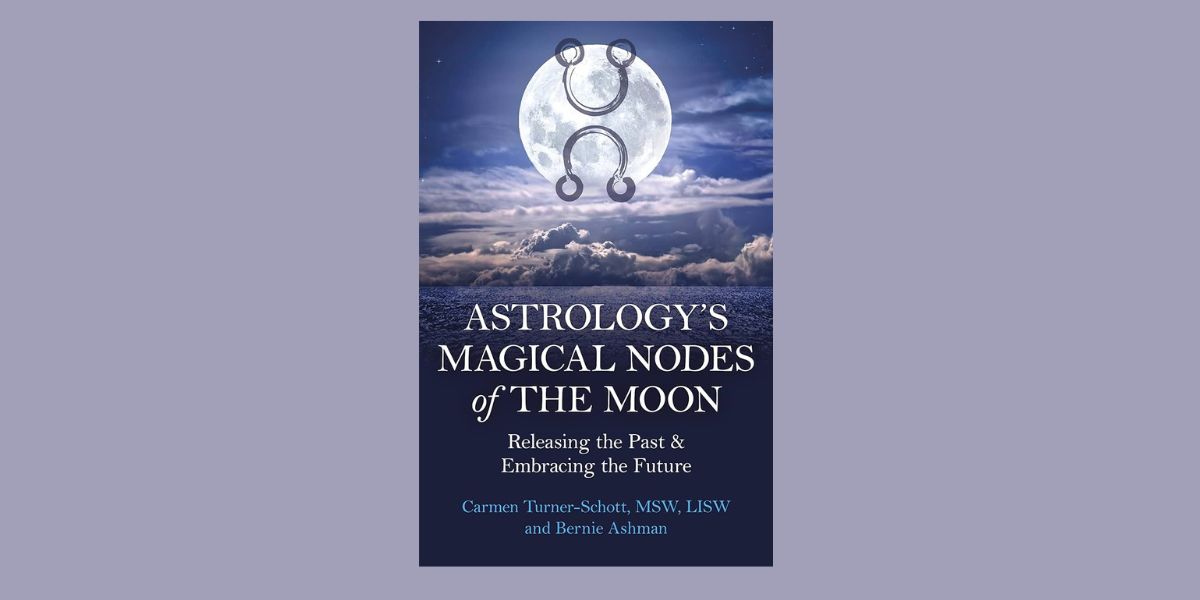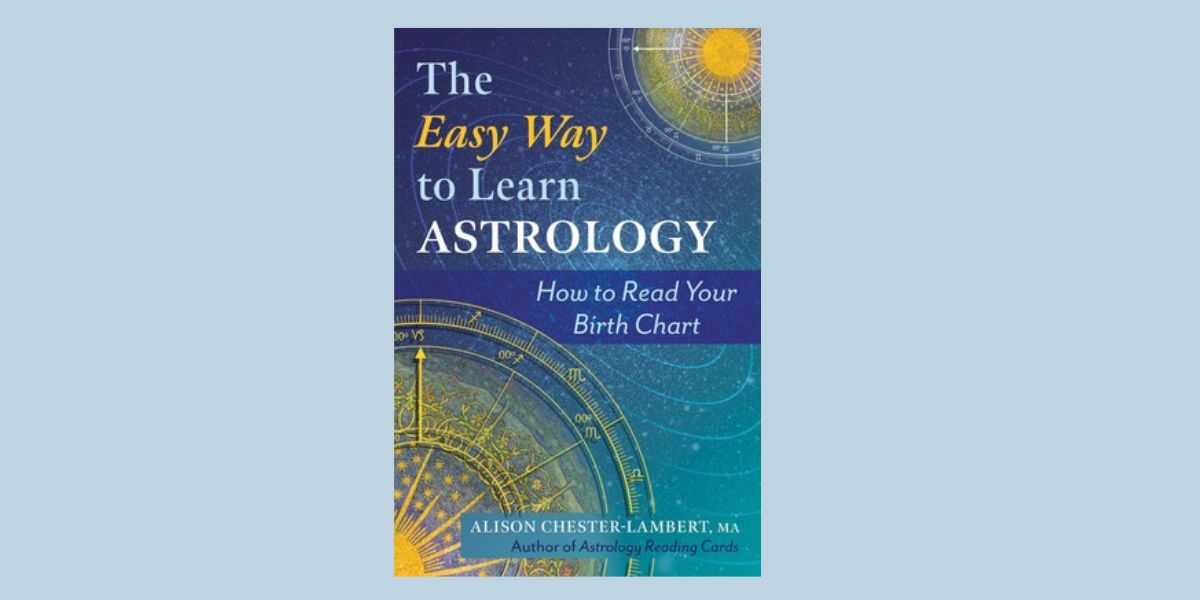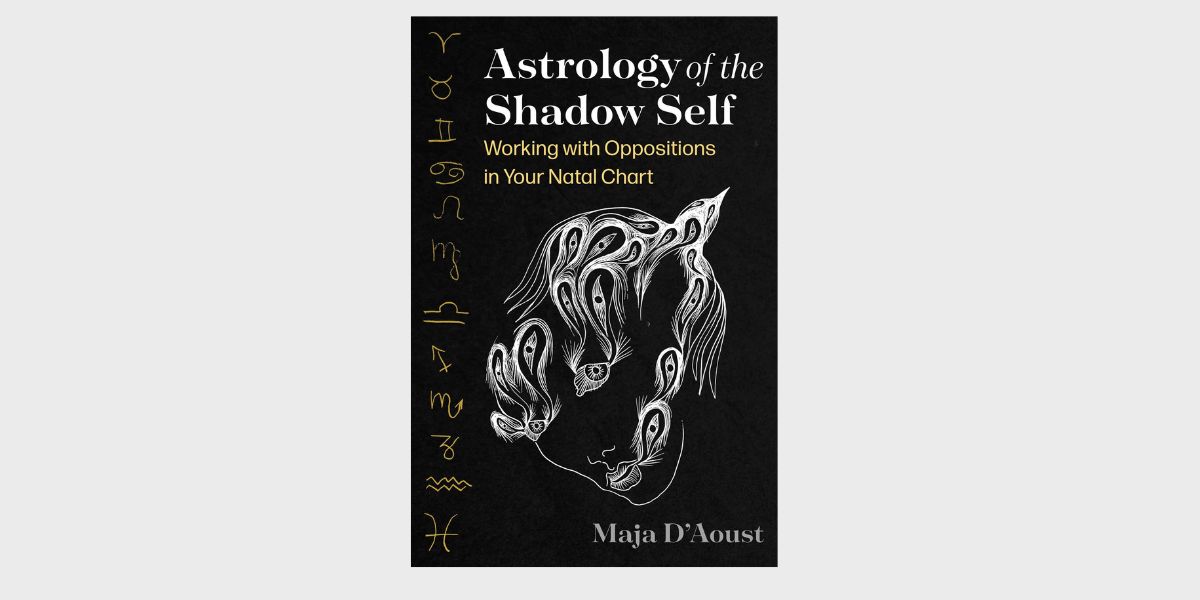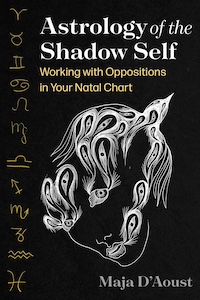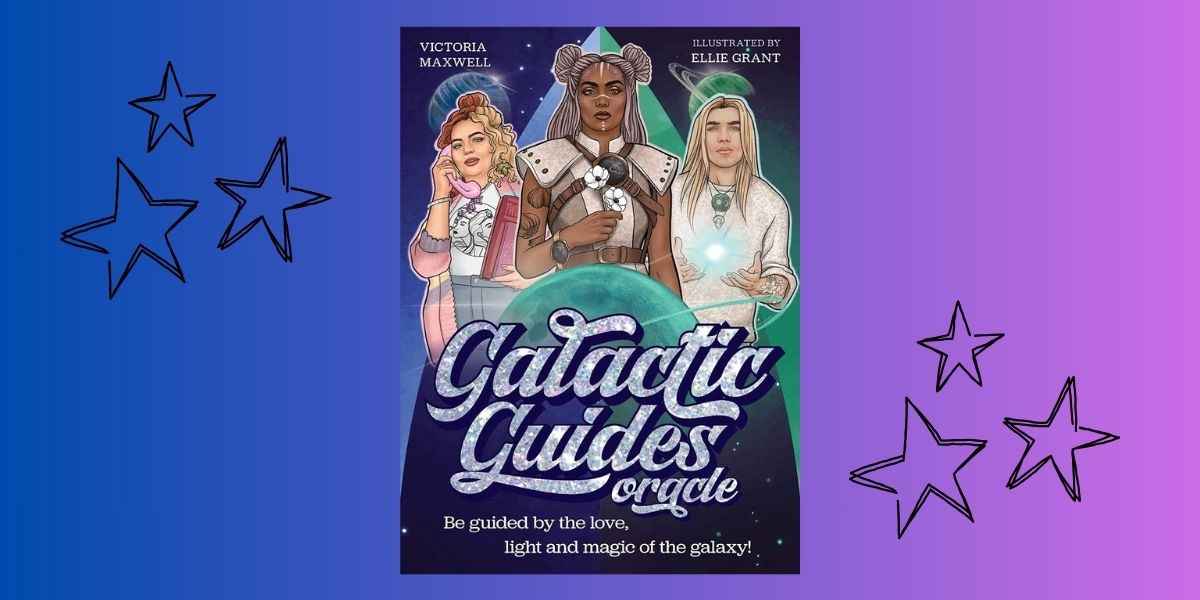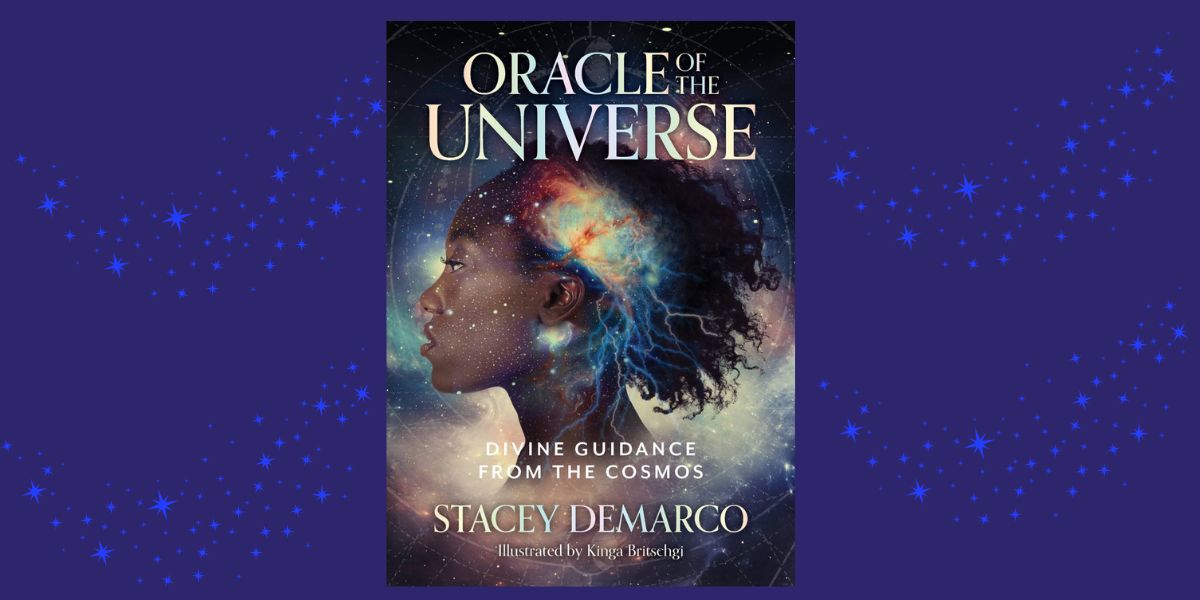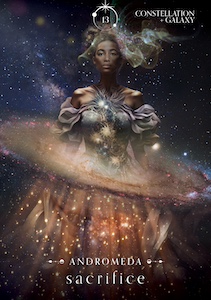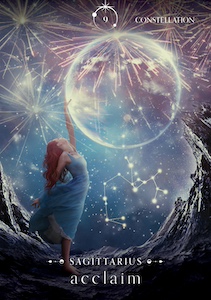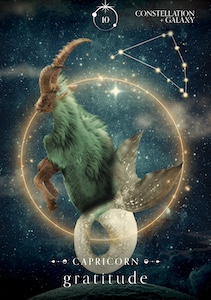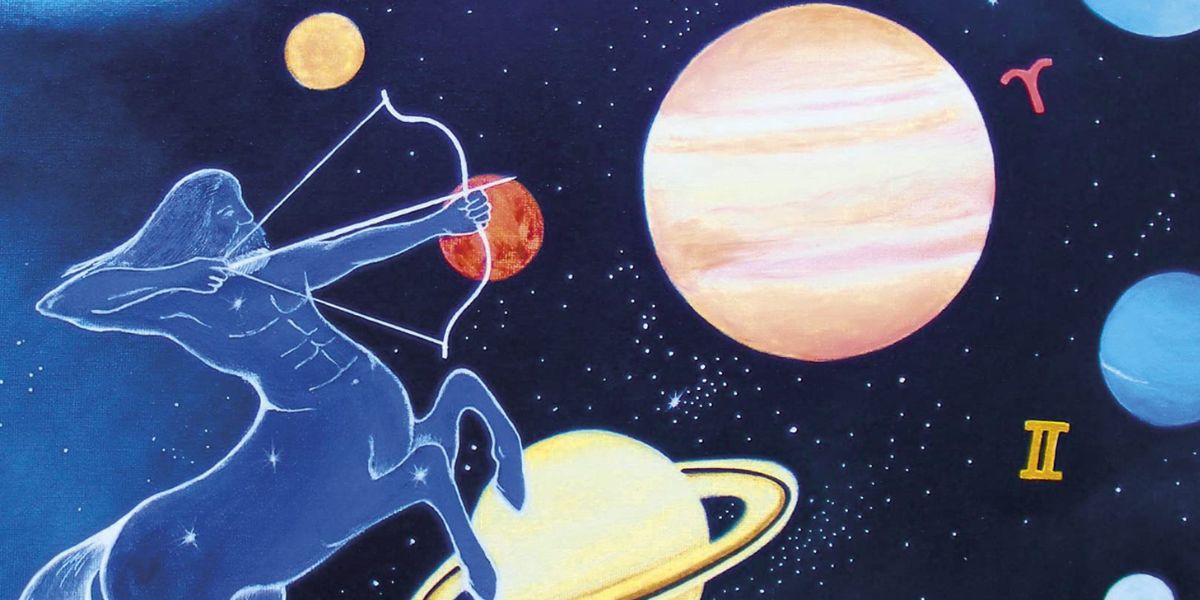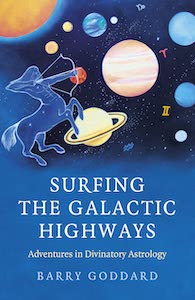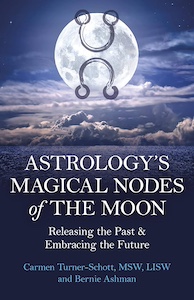
Astrology’s Magical Nodes of the Moon: Releasing the Past & Embracing the Future, by Carmen Turner-Schott, MSW, LISW, and Bernie Ashman
O-Books, 180341412X, 152 pages, August 2024
Astrology’s Magical Node of the Moon by Carmen Turner-Schott, MSW, LISW and Bernie Ashman is an exploration into the enigmatic world of lunar nodes in astrology. The authors delve deeply into the significance of the North and South Nodes, often referred to as the “Nodes of Destiny.” They teach us how these celestial points, which are not planets but rather mathematical points where the moon’s orbit intersects with the ecliptic, hold profound implications for personal growth, karmic lessons, and spiritual evolution.
“The true value of this book is to give you the tools to transform the past life issues described into creative success and to point you toward the paths of greater harmony.”1
Both Turner-Schott and Ashman are seasoned astrologers. Turner-Schott is the founder of Deep Soul Divers Astrology with an international astrological client base as well as a clinical social worker. She also hosts a podcast, runs astrology circles, teaches, and writes. Ashman is an internationally known astrologer with fifty years of experience lecturing, writing, and serving clients. Both authors also have previously published several astrology books, including Phoenixes and Angels (Turner-Schott), SignMates (Ashman), Sun Sign Houses and Healing (Turner-Schott), and Astrology, Psychology, and Transformation (Ashman).
With the intention of readers to have the background knowledge needed to better understand their nodal placements, in “Part One: Astrology’s Main Characters – Planets, Signs, and Houses” the authors teach the foundations of astrology. Topics covered include the element and modality of each sign, meaning of each planet, and an overview of the twelve houses. While these subjects could be entire books, this section is very informative and provides a wonderful overview for readers.
“Part Two: The Magical Nodes of the Moon” begins with a section on past lives. The authors write:
“Believing in past lives is central to analyzing the nodes of the Moon. The south node sign of the Moon always shows your deeper soul personality and lessons learned from the past. The north node shows the type of personality traits you are meant to master in this current lifetime.”2
This perspective is central to the rest of the book and shapes how the authors interpret each nodal placement. Following a section on how to calculate one’s North Node and South Node, the authors provide an overview of what the nodes are astrologically and share their personal nodal experiences.
From there, the authors guide readers through the interpretation of the nodal pairs (Aries/Libra, Taurus/Scorpio, Gemini/Sagittarius, Cancer/Capricorn, Leo/Aquarius, and Virgo/Pisces). Each chapter is a thorough navigation of one’s life purpose and personal challenges based on nodal energies in their chart. Readers are offered practical advice on how to harness the energies of the North Node for future growth while understanding and integrating the lessons of the South Node.
The authors do a great job of being clear and concise about how individuals can work with their nodes to achieve balance and fulfillment. At the start, they provide a quick one-sentence overview of mastered traits and traits to learn. Then every pair of nodes is explained in two to three pages of detail. And at the end there’s a bullet point list of ways to keep the North Node and South Node in harmony.
For further guidance, readers can then read the meaning of the houses their nodes fall in by looking up the sign corresponding with those houses. As an example, my North Node is in my 7th house of Aquarius and my South Node is in the 1st House of Leo. After reading the section on the Leo/Aquarius Nodes, I then wanted to learn more about the placement in the 7th and 1st house, which are represented by Aries (1st house) and Libra (7th house), so I turned to that chapter that has the section “Your North Node in Seventh House and South Node in First House.”3 So for each placement, this book really does delve into not just the sign of your nodes, but the significance of the house too.
What I like most about the approach of the authors is the blend of practical guidance with spiritual wisdom. Turner-Schott’s counseling skills shine through, as does Ashman’s many years of spiritual exploration. The past life attributes associated with the South Node placement has been very enlightening for me and helped me to better see some traits of mine in a new light. Reading about my North Node also pointed the path towards things I can continue to work on learning and integrating.
Overall, Astrology’s Magical Node of the Moon offers a compelling and insightful guide to the mystical world of lunar nodes. Turner-Schott and Ashman bring their extensive knowledge and unique perspectives to the table, providing readers with a rich tapestry of insights about their past lives and purpose in their current one. I would recommend this book to both novice and seasoned astrologers that want to better understand the meaning of the nodes in their charts for personal development. While astrology can be complex, this one aspect of the chart reveals a treasure trove of soulful wisdom.
Alanna Kali is an astrologer, numerologist, and pioneer spirit that loves to explore life through the lens of depth psychology. She has a passion for studying the humanities and social trends. Her academic work is centered upon reuniting body, mind, and spirit through eco-psychology. She loves reading, spending time in nature, and travel.
